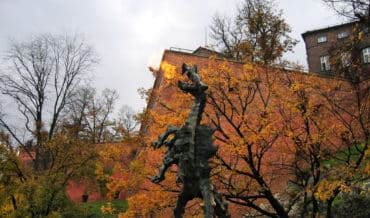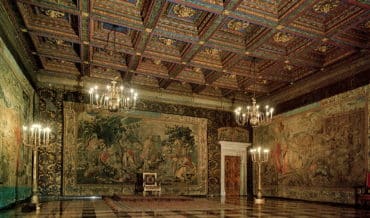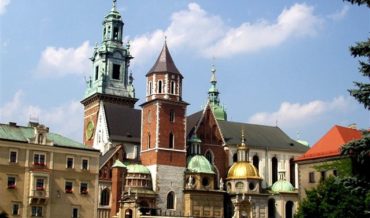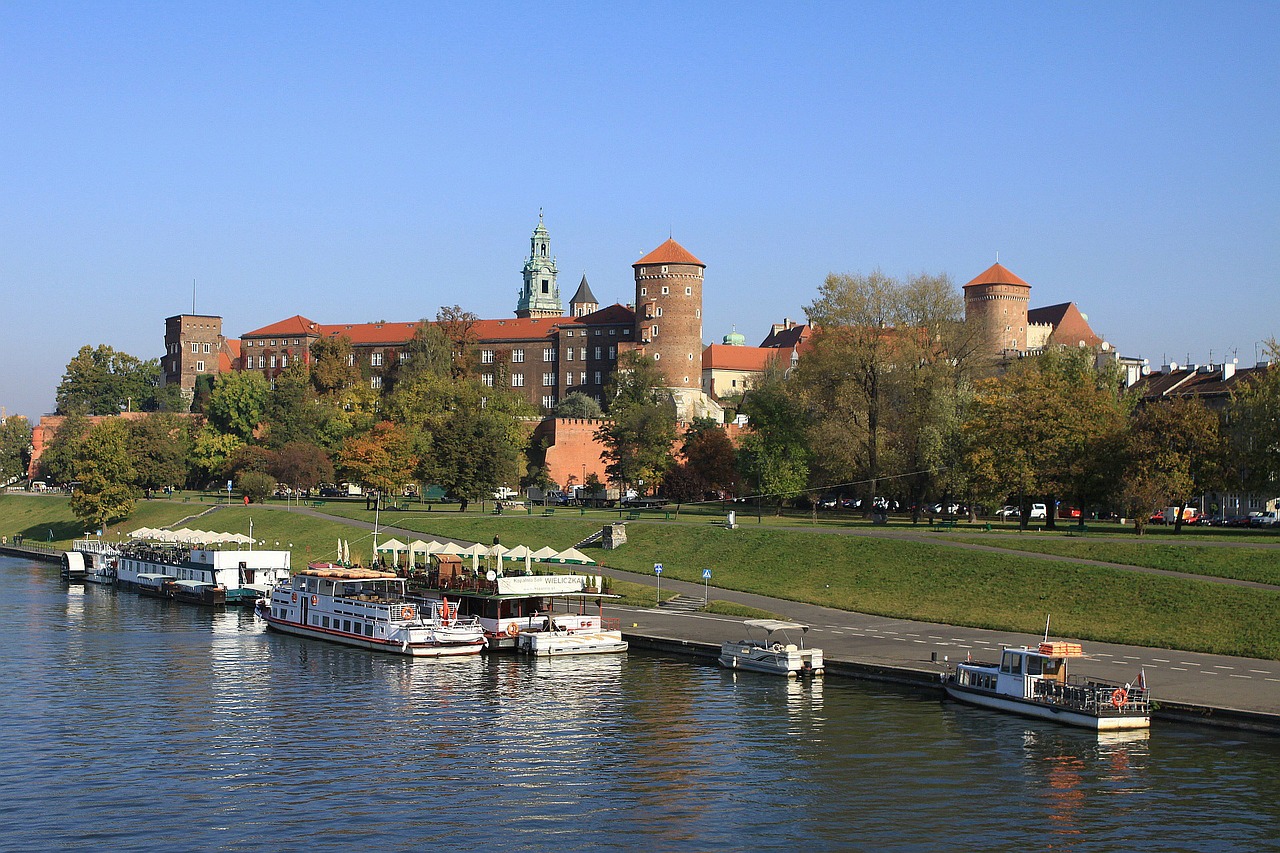Contents
Key Facts
• First Italian Renaissance architect to arrive in Poland, coming from Hungary around 1502-1504
• Royal architect and sculptor who served King Alexander Jagiellon and later worked under Sigismund I the Old
• Died in 1516 in Kraków, marking the end of a pioneering 14-year career in Poland
• Master architect of Wawel Castle's Renaissance transformation, designing the iconic arcaded courtyard
• Creator of significant religious monuments, including King John I Albert's tomb enclosure in Wawel Cathedral
• Pioneer who established the first Renaissance architectural workshop in Poland, training local craftsmen
Early Life and Arrival in Poland
Florentczyk Franciszek (Francesco Fiorentino) was an Italian architect and sculptor who fundamentally transformed Polish architecture by introducing authentic Renaissance principles. Historical records from the Wawel Castle archives indicate he arrived in Kraków around 1502-1504, likely recruited through Hungarian court connections where Italian artists had already established themselves.
Unlike many traveling craftsmen of the period, Franciszek came with comprehensive knowledge of Bramante's architectural innovations and Florentine sculptural techniques. His workshop methods, documented in surviving contracts, reveal he brought not just artistic vision but systematic training approaches that would establish Poland's first Renaissance architectural school.
Contemporary sources, including letters from Bishop Erazm Ciółek, describe Franciszek as "magister Franciscus Florentinus" – a title indicating his recognized mastery of both architectural design and sculptural execution, rare combinations even among Italian Renaissance artists.
Royal Patronage and Architectural Revolution
Franciszek's appointment as royal architect under Alexander Jagiellon (1501-1506) and continuation under Sigismund I the Old represented a conscious effort to modernize Polish royal architecture. Court records demonstrate his salary exceeded that of previous royal builders, reflecting the monarchy's commitment to Renaissance transformation in Kraków's Old Town.
His influence extended beyond construction to cultural diplomacy. The Renaissance features he introduced at Wawel served to demonstrate Poland's participation in European cultural developments, particularly important given the kingdom's position between Orthodox Russia and the Ottoman Empire.
Architectural Masterworks
The Wawel Castle Renaissance Transformation
Franciszek's revolutionary redesign of Wawel Castle's courtyard (1507-1516) introduced Poland to authentic Renaissance architecture. His three-story arcaded galleries employed Tuscan and Ionic orders with proportions following Vitruvian principles, creating Central Europe's earliest example of Italian Renaissance palace architecture.
Architectural innovations include:
- Precise mathematical proportions based on the golden ratio, revolutionary for Polish construction
- Advanced stone-cutting techniques using Pińczów limestone, optimized for local climate conditions
- Integrated decorative program combining royal heraldry with classical motifs like grotesques and medallions
- Structural engineering solutions including innovative roof designs that influenced Polish architecture for centuries
Archaeological evidence and building analysis confirm Franciszek employed Renaissance construction techniques previously unknown in Poland, including systematic foundation planning and advanced masonry jointing methods that ensured the structure's 500-year survival.
Religious Architectural Excellence
The tomb enclosure of King John I Albert (Jan Olbracht) in Wawel Cathedral showcases Franciszek's sculptural mastery. This monument features Corinthian pilasters and classical entablature with unprecedented technical precision for Polish religious art.
Sculptural innovations include:
- High-relief portrait medallions demonstrating advanced physiognomic accuracy
- Classical decorative vocabulary including acanthus capitals and egg-and-dart moldings
- Integrated architectural-sculptural composition that influenced Polish funerary art for generations
- Advanced marble-working techniques adapted from Florentine workshop traditions
Secular Architectural Legacy
The Erazm Ciółek Palace Portal
The Renaissance portal at 17 Kanonicza Street represents Franciszek's adaptation of Italian residential architecture to Polish noble requirements. This architectural element at the Bishop Erazm Ciółek Palace demonstrates sophisticated understanding of classical orders and their appropriate application to ecclesiastical residential contexts.
Technical features include:
- Precisely executed Ionic capitals with mathematically correct volute spirals
- Classical proportional relationships following Alberti's architectural treatises
- Advanced stone carving exhibiting Florentine chisel techniques
- Symbolic iconographic program appropriate for episcopal residence while maintaining Renaissance aesthetic principles
Workshop Methods and Cultural Impact
Documentary evidence reveals Franciszek established Poland's first Renaissance architectural workshop, systematically training Polish craftsmen in Italian techniques. His teaching methods, preserved in guild records, included theoretical instruction in classical proportions alongside practical training in advanced stone-cutting and sculptural techniques. This educational approach would later influence institutions such as the Academy of Fine Arts and complement the scholarly traditions of Jagiellonian University.
Educational innovations:
- Systematic apprenticeship programs modeled on Florentine workshop traditions
- Technical drawing instruction introducing Italian design communication methods
- Mathematical training in proportional systems and geometric construction
- Material science education covering stone selection, tool usage, and finishing techniques
His students, including documented craftsmen like Benedykt from Sandomierz and Jan from Michów, continued Renaissance traditions throughout the 16th century, establishing Poland's independent Renaissance architectural development.
Death and Enduring Legacy
Franciszek died in Kraków in 1516, with burial records indicating his high social status through interment in St. Mary's Basilica. His 14-year career fundamentally altered Polish architectural trajectory, establishing Renaissance principles that influenced construction throughout the Polish-Lithuanian Commonwealth and the broader Małopolska region.
Historical significance:
- Established Renaissance architecture as the preferred royal and noble building style
- Created educational framework that sustained Polish Renaissance architecture through the 16th century
- Introduced technical innovations that improved building quality and durability
- Facilitated cultural exchange between Italian and Polish artistic traditions
Modern architectural historians, including Adam Miłobędzki and Tadeusz Dobrowolski, recognize Franciszek's work as fundamental to Central European Renaissance development. His Wawel Castle courtyard remains architecturally intact after 500 years, testament to both his technical skill and aesthetic vision. Visitors to the Historical Museum of Kraków can explore exhibits documenting his revolutionary impact on Polish architecture.
Contemporary conservation studies using 3D scanning and materials analysis confirm the exceptional quality of Franciszek's construction techniques. His innovations in stone preservation and structural engineering continue to inform modern restoration practices, with examples of his sculptural work and architectural monuments preserved in collections at the National Museum, demonstrating the enduring relevance of his architectural contributions to Polish cultural heritage.



